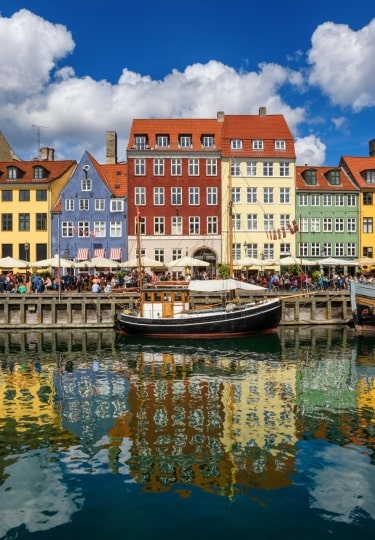Ask anyone who has traveled to Denmark’s capital city what Copenhagen is known for, and they’ll most certainly mention palaces, castles, canals, and cycling. Yet, for all its monumental attractions, Copenhagen is equally famed for its quirkier and more cultural credentials.
With one of Europe’s most recognizable statues, two of the world’s oldest amusement parks on its doorstep, and a much-discussed city-center “breakaway” commune, Copenhagen is famed for blending classic and contemporary.
But, above all, modern-day Copenhagen is renowned for its humor, creativity and hospitality. This is presented in the celebrated New Nordic Cuisine movement, the almost impossible-to-pin-down hygge feeling, and perhaps even a chance encounter with a royal.
Here’s what to keep an eye out for.
The Little Mermaid
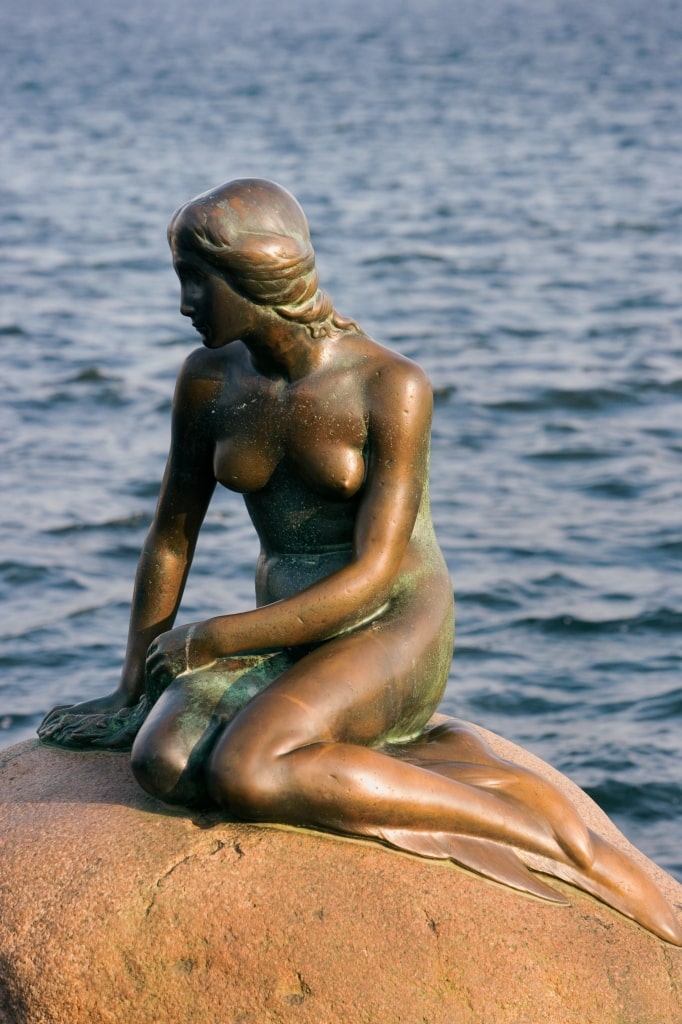
The Little Mermaid
Since its unveiling in 1913, the surprisingly diminutive Little Mermaid statue has been one of Copenhagen’s most recognizable sights.
Perched atop a rock on Langelinie Pier, the wistful-looking siren, sculpted from bronze and granite, pays tribute to the literary work of acclaimed Danish wordsmith Hans Christian Andersen.
Honoring the author’s most internationally recognized character, Ariel, from the 1837 children’s fairy tale “The Little Mermaid,” the statue was commissioned by Carl Jacobsen—who also gave his name to the Carlsberg brewery—and crafted by Edvard Eriksen.
Nowadays, the idyllic waterfront setting and statue, modeled in the likeness of a Danish prima ballerina, draw daily crowds.
Though Andersen, Denmark’s most prolific 19th-century writer, wasn’t born in the capital, he resided nearby in Nyhavn for decades—at houses 18, 20, and 68—where he wrote many of his most celebrated works.
Nyhavn & Canals
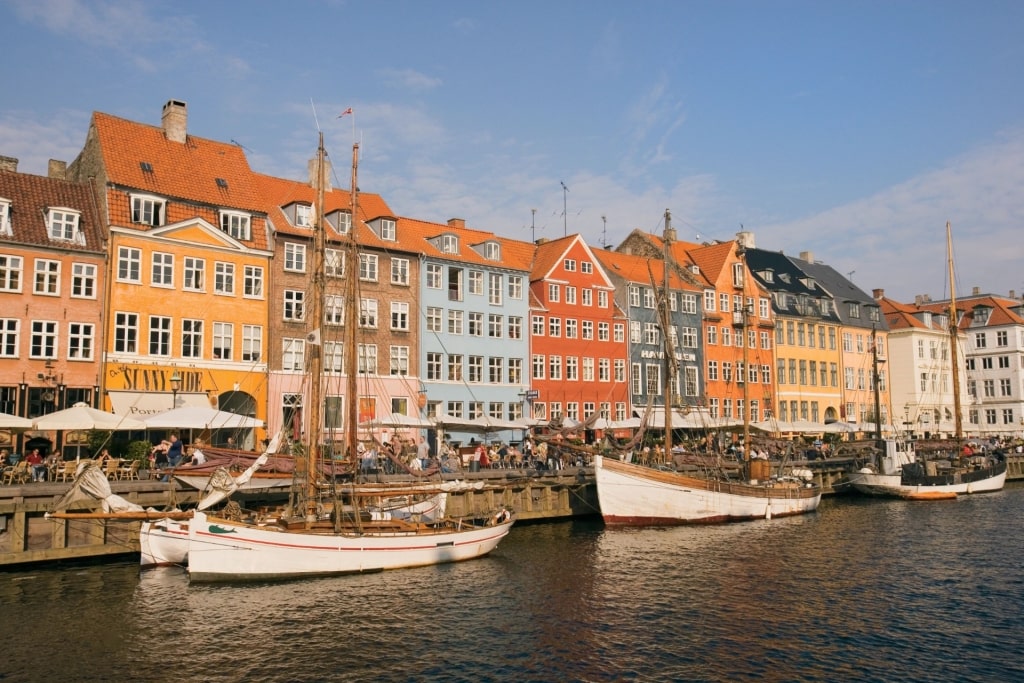
Nyhavn
Flanked by colorful 17th-century townhouses, wooden ships, and overflowing restaurant terraces, Nyhavn Canal is Copenhagen’s most famous and photogenic waterway and one of Europe’s best attractions.
A former commercial port and a mid-20th-century red light district, this pretty pocket of the city has seen more than its fair share of sailors, stories, and merriment. Nowadays, it’s a delightful spot to spend a few hours soaking up the animated atmosphere while dining, sipping cocktails, and being serenaded by jazz.
However, Denmark’s canal poster child isn’t the only waterway that Copenhagen is known for. The canal-ringed, architecture-packed island of Slotsholmen, the clutch of small channels around Christianshavn, and the Inderhavn, or Inner Harbour, are just some of the city’s other stellar aquatic passages.
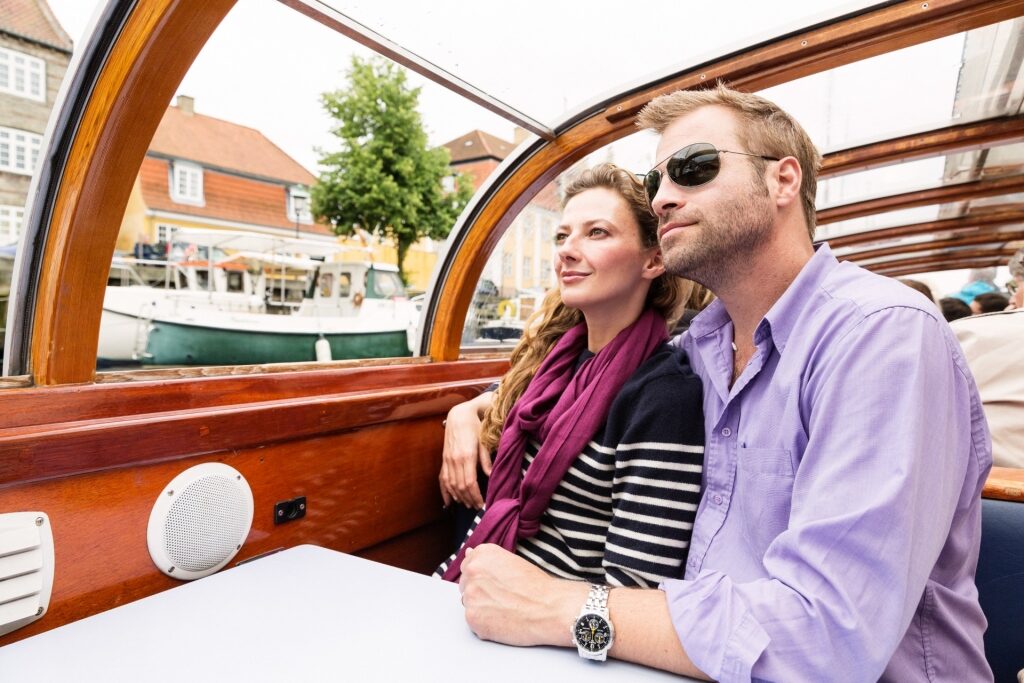
Canal cruise
Some of the best things to do in Copenhagen to get acquainted with the city include boarding a canal cruise, hopping on a kayak, or riding the public ferry, the Havnebusser. Gliding along the water, you’ll enjoy a front-row seat to much of the city’s finest architecture while gaining an understanding of Copenhagen’s maritime history.
Carlsberg & Craft Breweries

Carlsberg Brewery
Ask a beer enthusiast, “What is Copenhagen known for?” and they’ll certainly inform you about the city’s long-standing brewing scene. However, there’s one name in this European capital that transcends the brewers themselves: Carlsberg.
Founded in 1847, Carlsberg is Copenhagen’s oldest brewery. However, the family behind the brewery has played a critical cultural role in the city, too. The brand is named after Carl Jacobsen, the son of founder Jacob Christian Jacobsen, and philanthropy is a major part of its legacy.
In 1876, the Carlsberg Foundation was established, championing research and work in science and humanities. As you explore Copenhagen, you’ll soon realize just how far-reaching the foundation’s work is.
From donating artworks such as The Little Mermaid statue and the basis of the Ny Carlsberg Glypotek’s collection to establishing the city’s Museum of National History, the Jacobsens’ connections with the city are numerous.
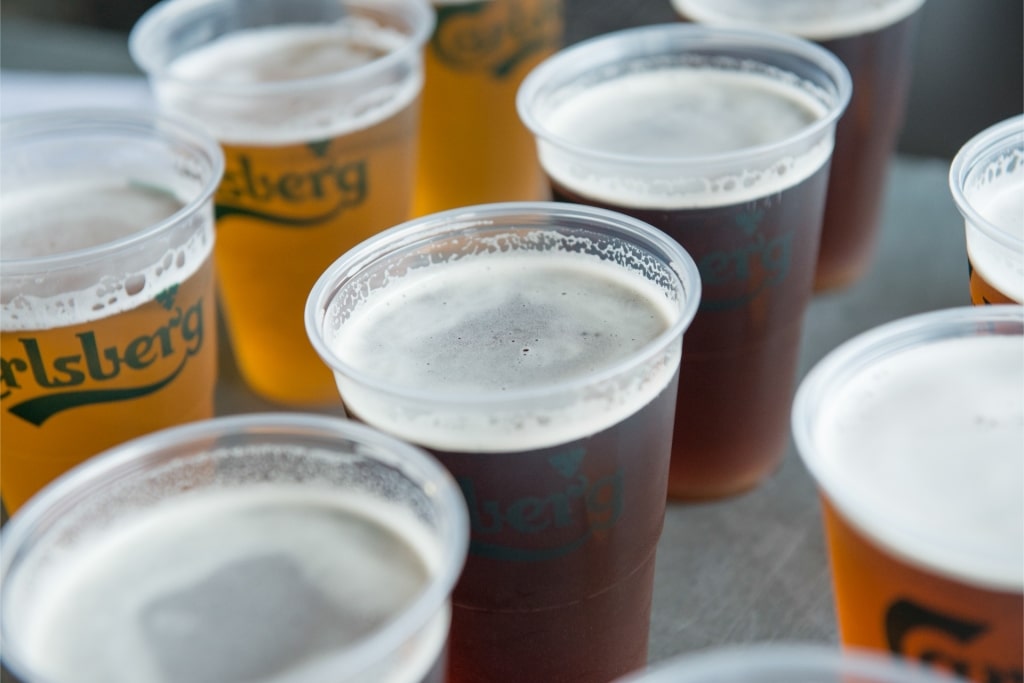
Carlsberg Brewery
Today, it’s still possible to tour the original Carlsberg Brewery, where you’ll learn about this pioneering work and sample the globally exported beer at its source.
Meanwhile, a new wave of microbreweries is catapulting Copenhagen’s craft beer scene onto the world stage. Head to Vesterbro, the former meatpacking district, to discover—and taste your way through—some of the city’s most creative, contemporary breweries.
Museums & Galleries

SMK – National Gallery of Denmark
Boasting more than 50 museums within its city limits, Copenhagen is arguably the Nordic region’s cultural capital.
Across an array of world-class exhibition spaces, you can be educated on regal affairs, dive deeper into Denmark’s history, or spend hours admiring homegrown and international artistic talent.
Copenhagen is one of the best cities for art, especially known for its clutch of galleries showcasing art in all forms. Denmark’s national gallery, the SMK, proudly hosts the country’s largest art collection in a majestic, Renaissance-style building.
With some 250,000 pieces, it’s easy to spend a full day admiring the galleries. Don’t miss the mid-18th century Danish and Nordic collection, covering the period when the likes of Jens Juel put Danish artists on the world stage.
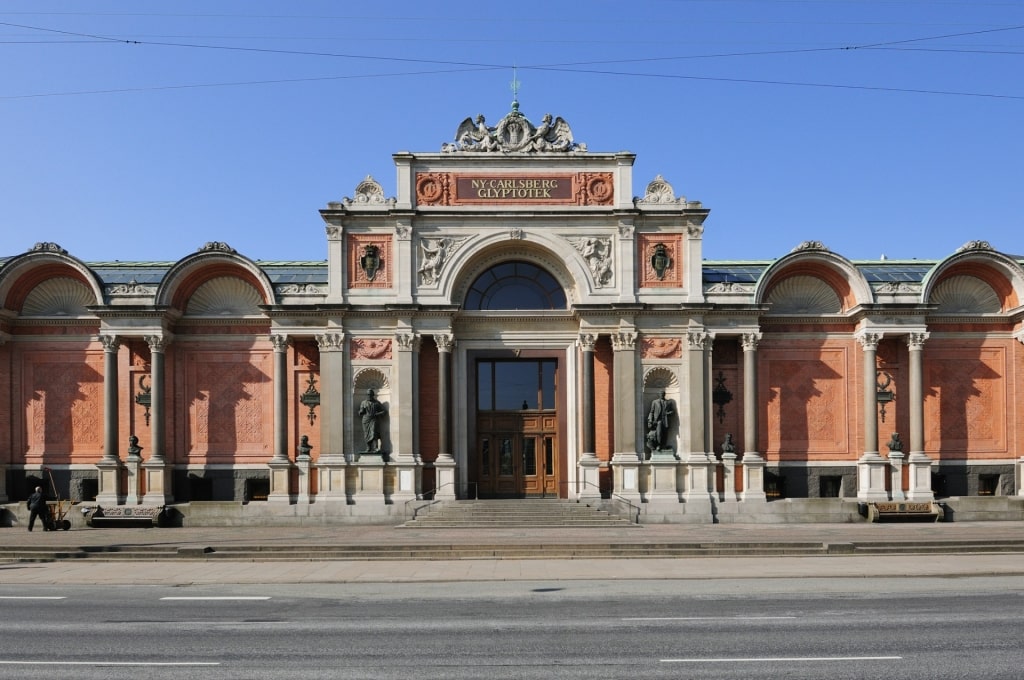
Ny Carlsberg Glyptotek
Other museums in Copenhagen include the Ny Carlsberg Glyptotek, displaying the 10,000-piece private collection of Carl Jacobsen. Then there’s the palace-housed National Museum for the Viking Era exhibition, or the out-of-city Frilandsmuseet, or Open Air Museum, spotlighting rural life and architecture.
The Royal Family
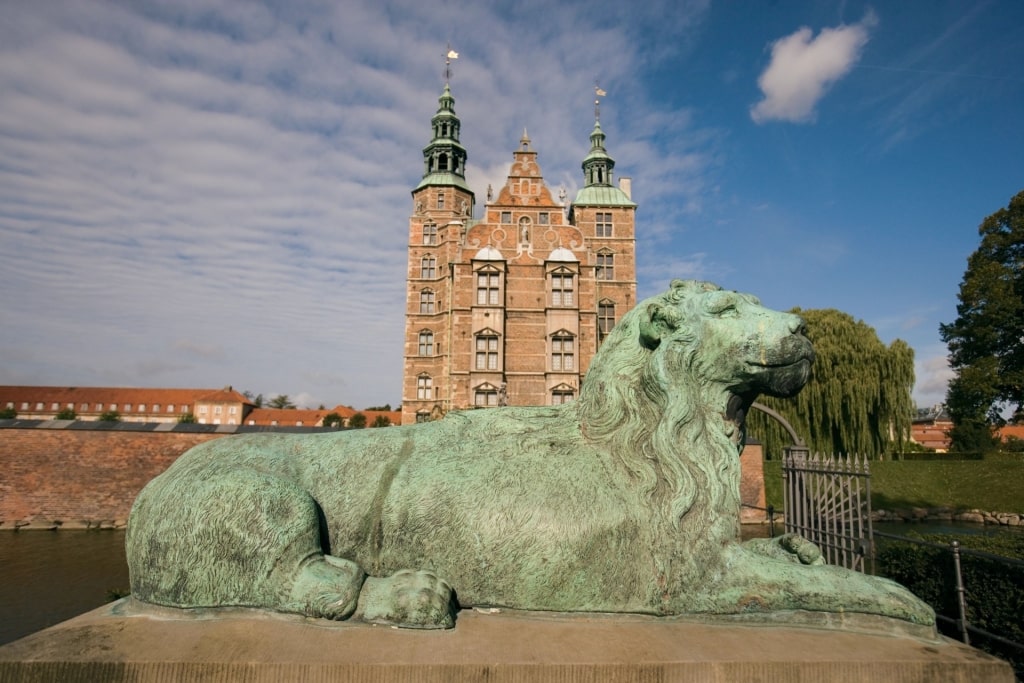
Rosenborg Castle
With over a millennium of regal history, the Danish Royal Family is one of the world’s oldest monarchies. Yet far from being out-of-reach aristocrats, the family has garnered global attention for their day-to-day interactions. They are often spotted out and about in Copenhagen.
While meeting a prince or princess isn’t guaranteed, there are plenty of opportunities to learn more about the royal family, their heritage, and customs while exploring the city.
For the ultimate royalty-tracing experience, aim to arrive at Rosenborg Castle before 11:30 am to witness the changing of the guard pageant.
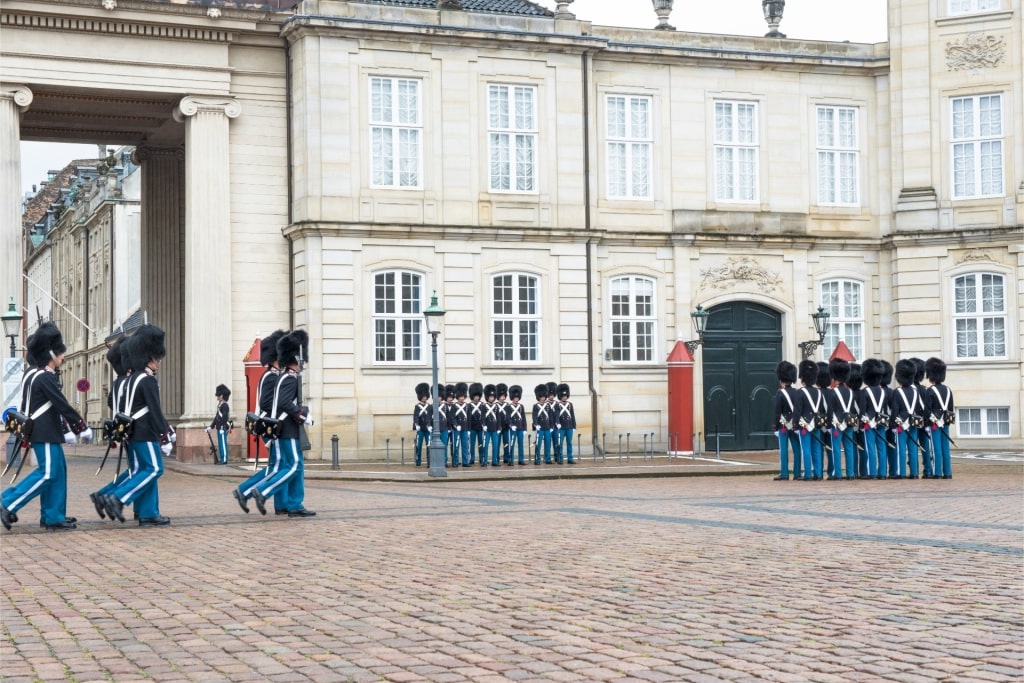
Amalienborg Palace
From here, a grand procession of impeccably uniformed, bearskin-capped military marches to Amalienborg Palace, the family’s Copenhagen residence. If there’s a full marching band present during your day in Copenhagen, you’ll have confirmation that the King is in residence.
Once you’ve witnessed the spectacle’s finale outside 18th-century Amalienborg—a quartet of identical palaces flanking an octagonal courtyard—visit Christian VIII’s Palace, now serving as the Amalienborg Museum.
Inside, it’s possible to tour some of the lavishly decorated halls, Victorian staterooms, and reference library while learning more about the family’s history and role, even in Denmark’s modern-day democracy. Don’t miss the flamboyant Fabergé Chamber, where some 100 Russian jewelry pieces dazzle.
Palaces & Castles
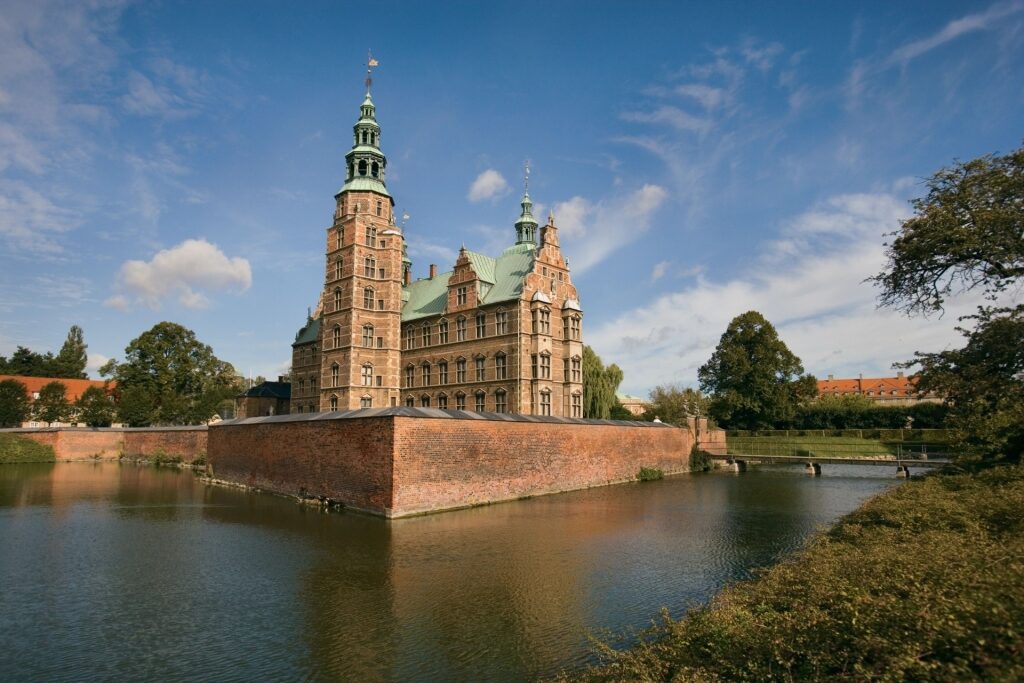
Rosenborg Castle
These centuries of royal credentials have seen numerous palaces and castles constructed in Copenhagen. Many now double as museums, and some are arguably even more impressive than the official royal residence.
Alongside Amalienborg, it’s worth getting acquainted with additional aristocratic landmarks, including Renaissance Rosenborg Castle, for a crown jewels close-up.
The highlight of the magnificent summer house is the basement Treasury Museum, where regalia, including crowns and the sparkling diamonds of King Christian III’s 16th-century state sword, are displayed in full glory.
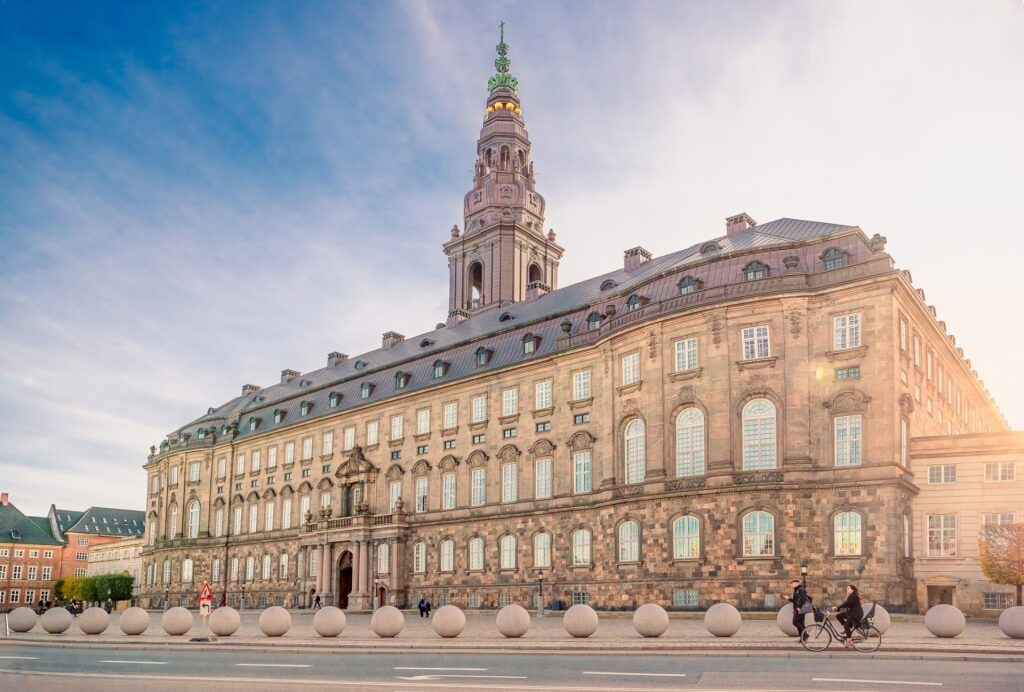
Christiansborg Palace
Christiansborg Palace is equally well-known and shines a unique spotlight on the switch from absolute monarchy to constitutional monarchy in 1849. Now housing the Danish Parliament, the location has hosted some form of palace or castle since the 12th century.
The new neo-Baroque building was completed in 1928, replacing the previous fire-destroyed palaces. Still, that doesn’t detract from its magnificence. Between the state banquet hosting Great Hill and the tourable underground areas—where some original medieval ruins remain—it’s a true window into centuries of royal rule.
If you’ve time for a day trip, visit Kronborg Castle, a UNESCO World Heritage Site north of the city. A former fortified royal residence, this European castle is most famous for being the setting of Shakespeare’s Hamlet.
The Round Tower
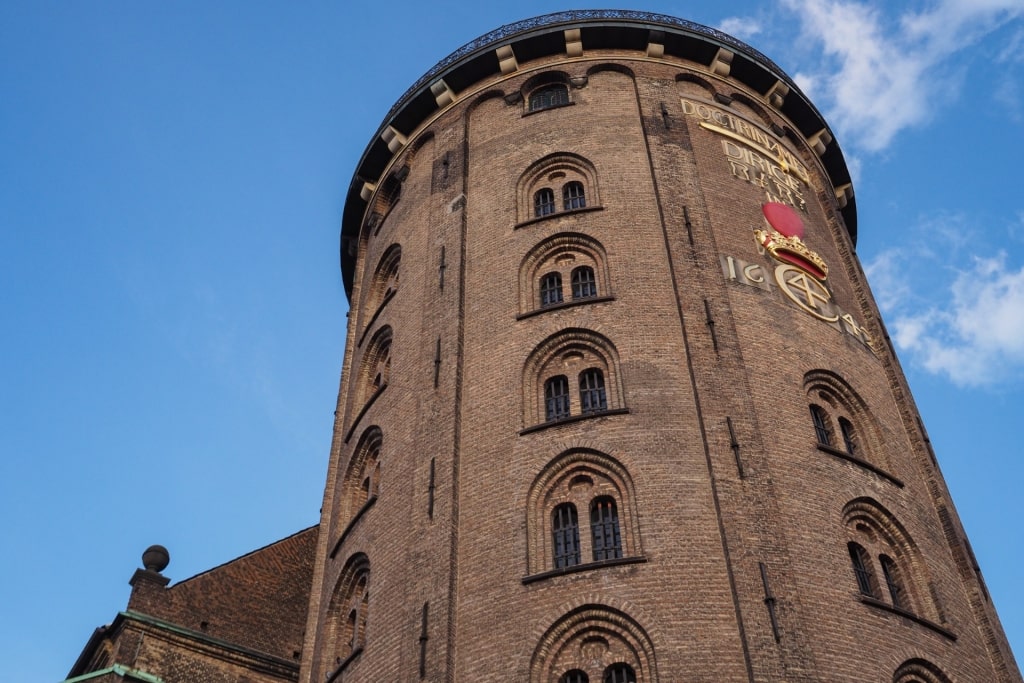
The Round Tower
One of Copenhagen’s most iconic landmarks, the 17th-century Rundetaarn, or Round Tower, hails from the days when Denmark was leading the way in astronomical research. Crowning the tower is Europe’s oldest functioning observatory, still used today.
Even if you’re not an astronomer, the tower provides a panorama of Copenhagen’s skyline. Reaching the outdoor viewing platform, which wraps around the observatory, involves tracing the footsteps—or rather hoof steps—of another Copenhagen legend.
Climbing the gently inclining sloping staircase of the Spiral Tower, constructed around the hollow core, you’ll follow in the path of Peter the Great, who is said to have arrived at the top of the tower on horseback in 1716.
New & Old Nordic Cuisine
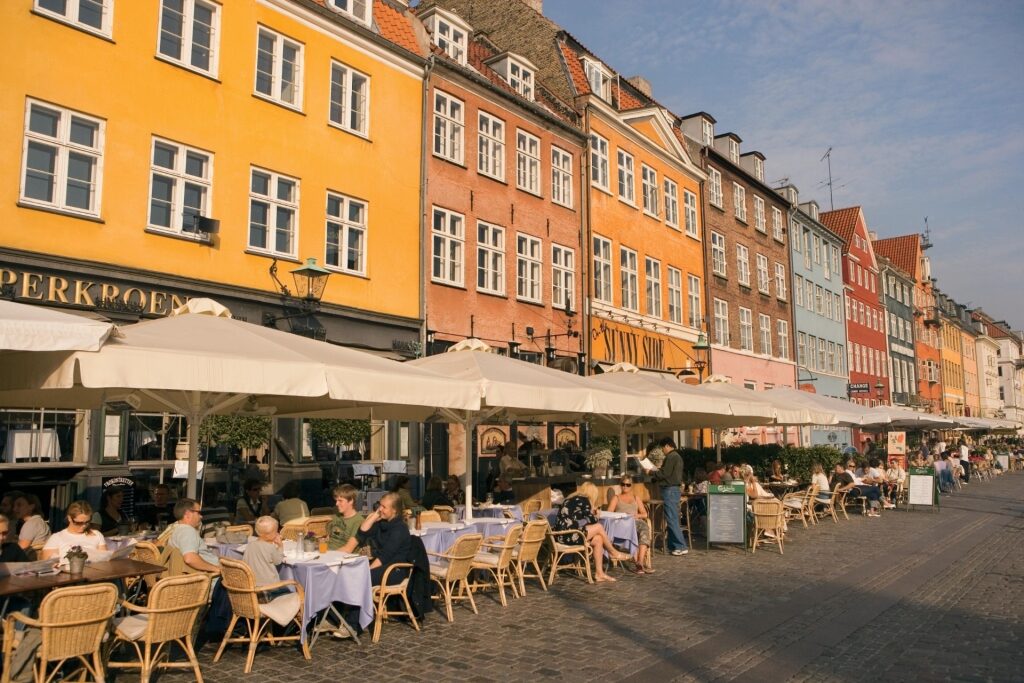
Nyhavn
From world-famous, gastronomy-changing Michelin restaurants to long-standing staples, such as smørrebrøds, Copenhagen’s contribution to global cuisine is impressive.
It’s impossible to answer the question, “What is Copenhagen known for?” without mentioning Noma, the acclaimed restaurant that helped put New Nordic Cuisine on the map.
This culinary movement, which blended local and ancestral ingredients with ethical practices and presentation, took the world by storm. And even though the renowned restaurant’s doors are closing, more creative cuisine is certainly bubbling with the pioneering, lab-like kitchen and pop-up dining dubbed Noma 3.0 on the horizon.
Copenhagen is one of Europe’s best food cities, so a tantalizing feast for the tastebuds awaits. The city is just as celebrated for its seafood obsession—Limfjord oysters and plump blue mussels are two of the most famous local flavors—as its pastries, like snegl, a type of cinnamon roll.

Smørrebrøds
The best way to sample Denmark’s most traditional flavors is to order a selection of smørrebrøds. Served on a base of rugbrød, a typical rye bread, and topped with signature ingredients, such as pickled herring or liver pate, these open-faced sandwiches are ubiquitous. Head to the Torvehallerne food market for a varied sampling.
Read: The Ultimate Copenhagen Food Guide
Scandinavian Design & Architecture
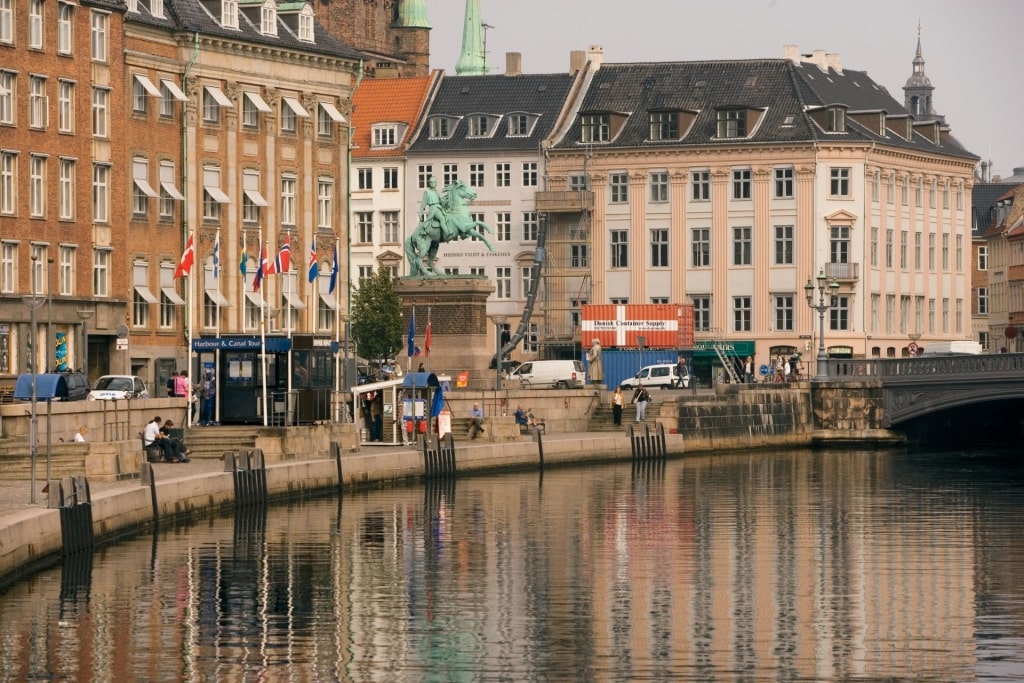
Nyhavn
Within minutes of arriving in this Scandinavian city and scanning the centuries-spanning, eclectic mix of constructions, you’ll have another answer to what Copenhagen is known for: architecture in all its forms.
Noted for blending futuristic design with swoon-worthy classical styles on seemingly every corner, Denmark is known for being a true powerhouse for Scandi Design. In 2023, it was even recognized by UNESCO as the World Capital of Architecture.
Nowhere is contemporary Copenhagen more obvious than along the Københavns Havn waterfront, where clean lines and minimalist touches are evident in countless buildings.

Opera House
Two of the most striking are the glass-fronted Opera House—one of the world’s most modern musical venues—and the cube-like BLOX cultural center, part of which houses the Danish Architecture Centre.
Other notable Danish architects, fashion and furniture designers, and contemporary creatives are spotlighted at the city’s Designmuseum, celebrating many of the big names credited with helping to push Scandinavian design to the world stage.
Amusement Parks
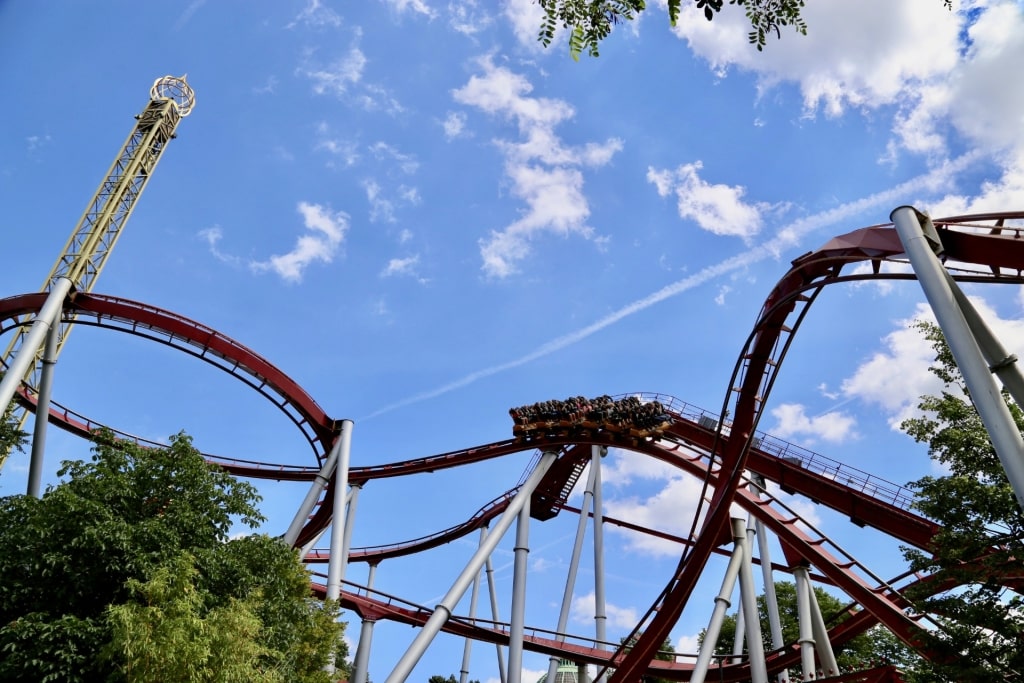
Tivoli Gardens
Home to the world’s oldest and second-oldest amusement parks, Copenhagen is a city that knows how to have fun; Tivoli Gardens is the most visited attraction in the city.
Established in 1843 by Georg Carstensen, a well-traveled military officer, the park incorporates various international influences, from the exotic flower gardens to the Moorish-inspired facade of the park’s Nimb Hotel, and free-roaming peacocks.
Famed for its vintage amusements, tranquil gardens, bustling food market, and the 1914 Rutschebanen, one of the world’s oldest, still-working wooden roller coasters, it’s been a must-visit on many a traveler’s list for nearly two centuries.
However, the award for the world’s oldest amusement park goes to Bakken, established in 1583 on the city’s outskirts.
Read: Things to Do in Copenhagen at Night
Freetown Christiania
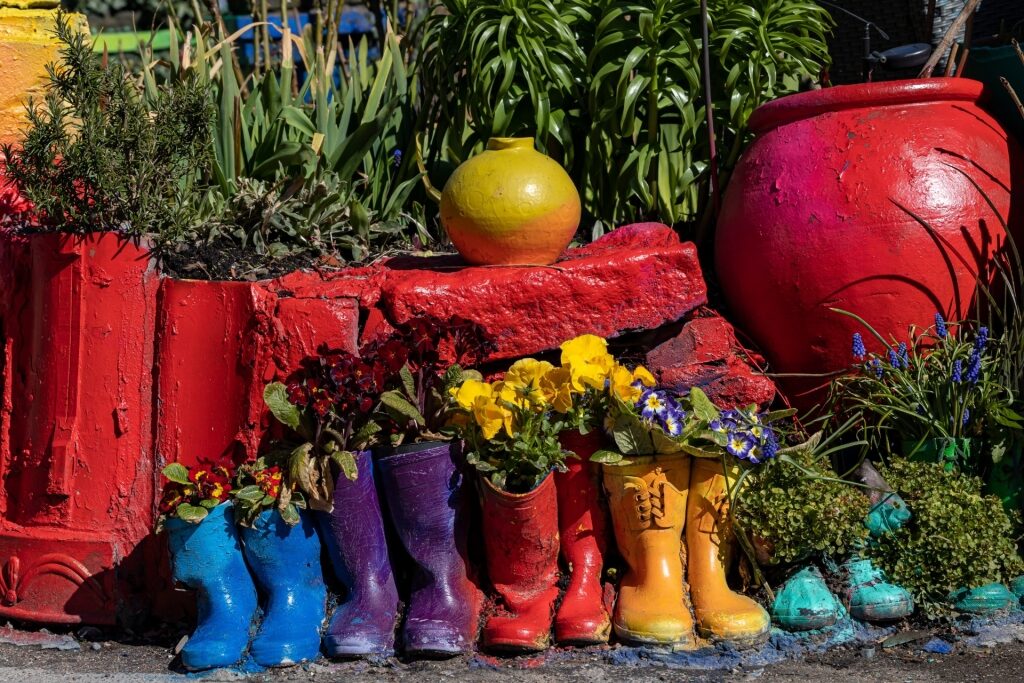
Christiania
Christiania, the city’s “breakaway commune,” is arguably the most unusual thing that Copenhagen is known for.
Informally established in the 1970s, when a former military base became a squatters’ favorite, the community grew over the following decades. Eventually, in 2012, the free-spirited group secured a more permanent status when a land purchase was agreed with the council.
A fascinating and unexpected sight in one of Europe’s most notoriously expensive, stylish, and spotless cities, Freetown Christiania soon became well-known in alternative circles worldwide.
It’s possible to visit the colorful, mural-decorated district. However, it’s recommended that you join a guided tour. Doing so will allow you to learn more about the community’s flag, Løn currency, and way of life without inadvertently breaking any rules. The ban on photography is particularly strict.
Cycling
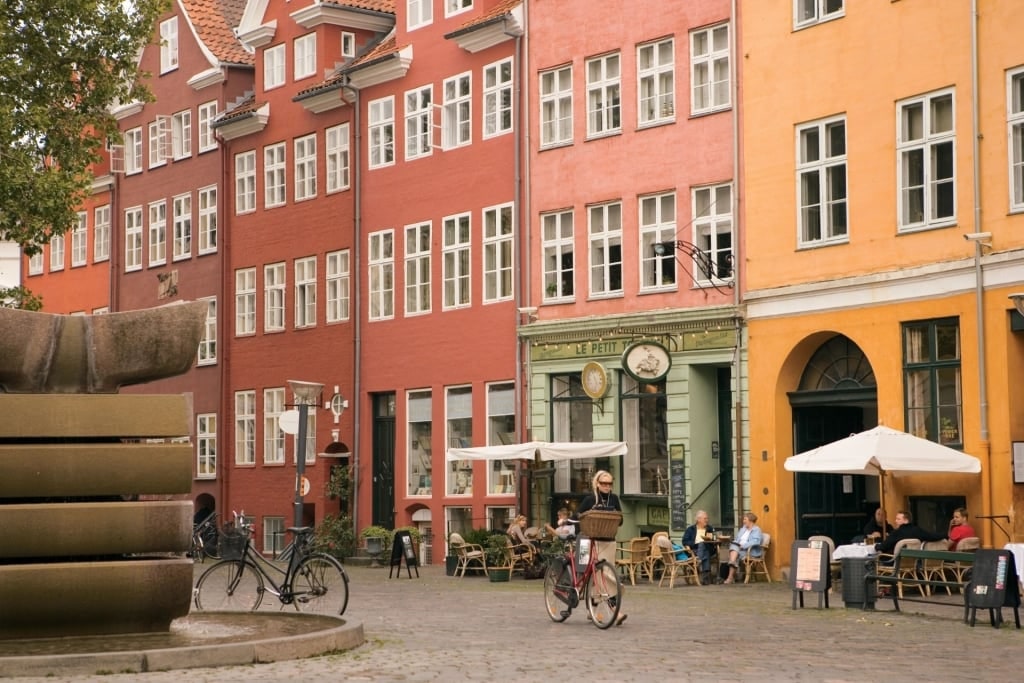
Biking in Copenhagen
Regularly awarded the title of the world’s most bike-friendly capital city, Copenhagen is full of avid bike riders. It’s impossible to miss the chorus of cyclists crossing the city at all hours.
Supporting the city’s nearly 50% of commuter journeys completed by bike is an impressive infrastructure, ensuring that two-wheel journeys are safe and simple. With dedicated bike lanes, ample parking, and an easy-access bike-sharing scheme, exploring the city by bike is a delight.
Hygge & Happiness

Nyhavn
Scandinavian cities are consistently ranked as home to some of the happiest societies in the world, and Copenhagen is no exception.
A big part of this is credited to the Danish concept of hygge, which loosely means a sense of coziness. And while it’s hard to pinpoint where to experience hygge on a visit, coziness is something Copenhagen has in abundance, an essential in a country where winter means scant sunlight.
From cute cafés with plush cushions and flickering candlelight to stores stocked with comfy wool sweaters and the fuzziest of socks, it’s just a matter of exploring the city to find your own wholesome, heart-warming moment. Ideally, it’ll be embraced with an indulgent hot chocolate.
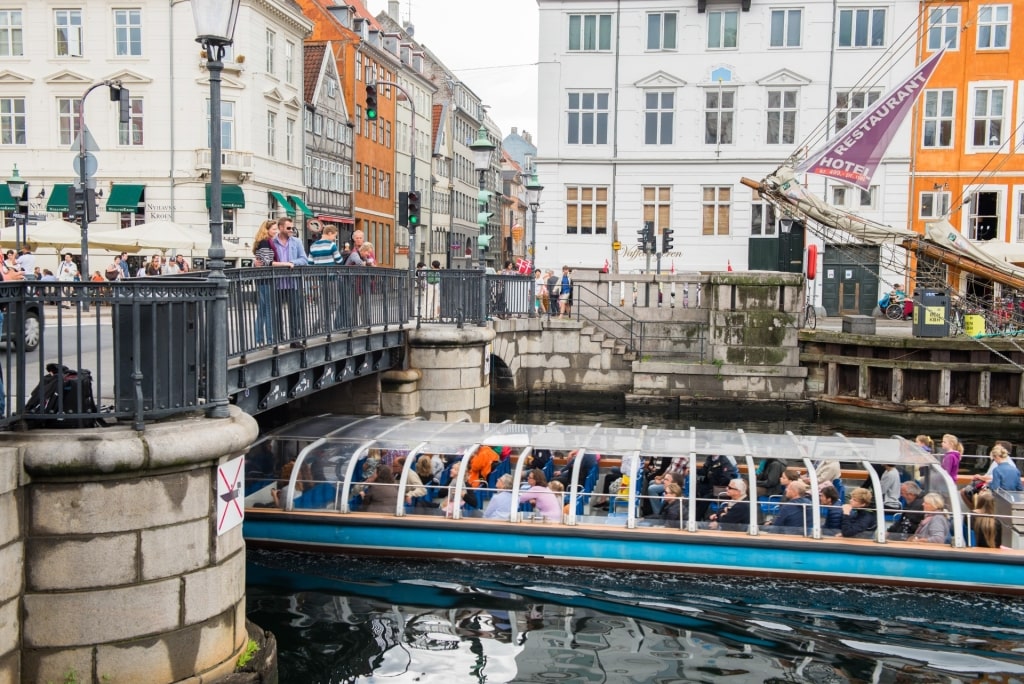
Canal cruise
Now you have a taste for the Danish capital, why not discover the city firsthand? Browse Celebrity’s cruises to Copenhagen and plan your Scandinavian vacation.
